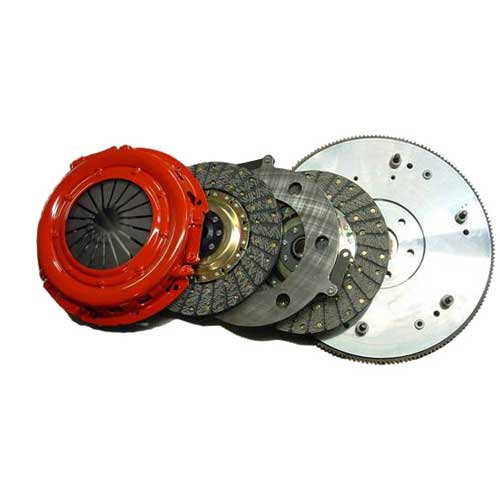Schedule a Call Back
Industrial Clutches
Industrial Clutches
Friction Elements offers a wide range of industrial clutches.
- The following clutches types are: Clutch assembly types:Belt clutch: A belt clutch consists of a set of belts and pulleys that tighten the belts to help increase friction. These types of clutch assemblies are used in lawn mowers, agricultural equipment, and snow blowers.Dog clutch: This positive engagement, non-slip clutch assembly is used in applications in which there can be no slipping. These clutch assemblies are most commonly used for manual transmissions in vehicles.Hydraulic clutch: In a hydraulic clutch, the driving and driven members do not make contact. The function of the clutch is driven by the motion of the hydraulic fluid. Hydraulic clutches are used in some automobiles, diesel locomotives, industrial machinery, and forklifts.Electromagnetic clutch: Electromagnetic clutch assemblies contain an electromagnet that engages the clutch. These clutch types are very smooth.Overrunning clutch: Overrunning clutch, or freewheel, clutch assemblies have the ability to disengage if an external force causes the driven shaft to be rotated faster than the drive shaft.
- To choose the best possible clutch assembly for a given application, many factors must be considered. Specifying a clutch on horsepower alone may yield a half-dozen potential candidates.Adding criteria such as cycle rate, availability of actuating method and preferred mounting will all have the effect of focusing choices.
- What is a clutch assembly?
- Clutches are used to connect the prime mover (motor or engine) to the load in a manner that allows torque transmission to be interrupted. Clutches are used to engage a wide range of pumps, fans, and conveyors in industrial, mobile and business machine applications.
- The main purpose of a clutch assembly is to connect and disconnect two rotating shafts. One shaft is connected to the power source, or engine, and the other shaft, which is driven by the power source, provides the power, or torque, that drives the vehicle or machinery.The clutch assembly connects the two shafts in three different ways:Engaged: the shafts are locked together to rotate at the same speed.Slipping: the shafts are locked together but move at different speeds.Disengaged: the shafts are not locked together and rotate at different speeds.
- There are many types of clutch assemblies available for different applications. Most clutch assemblies are friction clutches that work using frictional forces to synchronize speeds between the two shafts. Some friction clutches can also work with a little bit of slippage.
- Mechanical power clutch assembly supplier clutch assembly parts:Clutch assemblies consist of several component parts including the flywheel, clutch disc, pressure plate, cover, springs, and bearings. The exact configuration of a clutch assembly depends on its specific application. In a basic clutch assembly, the clutch disc and pressure plate direct the power from the power source to the driven shaft by pressing tightly against the flywheel.The springs and bearings ensure that these discs are pressed tightly together. The discs used in a clutch assembly are typically lined with asbestos or resin for friction. Ceramic materials are used to create friction in heavy-duty applications.
















